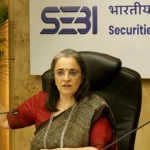The Securities and Exchange Board of India (SEBI) in its Board meeting dated 30th September 2024 discussed nomination issue in detail and came up with several innovative provisions. These provisions are intended to address beneficiary issues in securities market where huge number of securities are lying unclaimed. Sometimes fraudsters take advantage of lax nominee rules and siphon off proceeds of legal beneficiaries. As a first step, SEBI had made nomination mandatory and as next step it has rationalized the rules governing nomination in securities market. Critics may find several gaps in the provisions. But no one can deny that well begun is half done. SEBI has begun well. Let us discuss.
More nominees, freedom of choice: Nominee is key to passing on the beneficial ownership to legal heirs. He is a trustee of legal heirs. There may be chances that the nominee itself is a legal heir. For example, the spouse is the legal heir of deceased husband/wife. If he/ she is the nominee, she will inherit the benefits. If nominee is a third person, he is just a trustee of legal heir not the ultimate beneficiary. The SEBI Board has raised the number of nominees from 3 to 10. In my view, this is a welcome move. It gives more choice/option to the account holder. The critics may say that increasing the number of nominees will create operational hassles. The first issue they raise is the problem of plenty. It will be difficult to take all the nominees on board in transmission of benefits to the legal heir. In case of demise of one or more nominees, it will be all the more complex. This issue can easily be solved by creating a framework of ‘not less than’ number of nominees for transmission of benefits. There may be more legal ways of doing this. To keep the greedy legal heirs of nominees at bay, SEBI has said that ‘no rights will be granted to the legal heirs of a deceased nominee’.
Software based authentication: As far as software modification for implementing nomination provision is required, it’s just half an hour job to add more fields for accommodating a greater number of nominees. The use of unique identification number like PAN, Aadhaar or Passport details of nominees is a welcome move. I would suggest OTP based verification of such Adhaar details to avoid fraudulent addition of nominees. The list of nominees must be verified by the asset holder through a link at his mobile/e-mail id. It will automatically save the list of nominees at his e-mail and create an indelible record.
Attention on ageing and ailing population: The capital market regulator SEBI has kept in mind the problems faced by ageing and ailing investors. It has permitted nominees of incapacitated investors to act on his behalf with some ‘checks and balances. Although, this provision is prone to misuse, one can’t question the intentions of SEBI. The provision of OTP, link-based authentication through mobile, video verification and verification on call are some of the measures to check firewall against fraud. As a safeguard, the amount / number of mutual fund units can be capped for transaction through nominees. The power of attorney based mandate procedure being used in banking system could also be replicated in securities market with certain modification. The UPI Circle type Securities Circle could be developed to delegate limited access for transaction through nominees.
No safeguard for Joint holders: Deliberating the nomination provisions, SEBI has said that in case of joint demat account and joint mutual fund folios, nomination will be optional. Generally, joint accounts are held by husband-wife duo. In case of sudden demise of both of them, the asset will turn into unclaimed category. This provision is in contravention to the overall provisions of nomination being laid by SEBI. I guess that this decision was taken in haste. It’s true that the survivor among the joint account holder will be the beneficiary but there may be cases where there is no survivor. It needs to be revised.
Creditors woes taken into consideration: SEBI has been considerate enough in making a provision for well-being of creditors. It has said that ‘creditors’ claims will take precedence over transmission of assets to nominees, if previously pledged’. This means that the creditors will collect their due before handing over the asset to nominees. For example, if somebody had taken loan against share and died in between, his shares will be released to the nominees after factoring in the loan amount.
Sync is the key to success: Last but not the least, the three regulators of financial markets – RBI, SEBI and IRDA must sync among themselves on nominee provisions. Lack of synchronization creates confusion and leads to chaos. For example, cut off time for investment in mutual funds is 3 pm and in stock market it’s 3.30 pm. For currency market it’s all the more interesting – for exchange traded currency derivatives’ it’s 9 am to 5 pm, for cross currency future and options it’s 9 am to 7.30 pm and for over-the-counter currency trades it’s 9 am to 3.30 pm. You would require a lot of memory space to remember all these timings. Therefore, synchronization of provisions across the regulators is a must.
We must appreciate the concern shown by SEBI on nomination issues. The success of the nominee provision would depend on the checks and balances, synchronization with existing laws and the penal measures for violation. Till then, WELL DONE SEBI!



